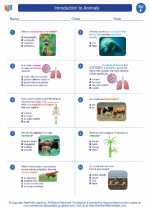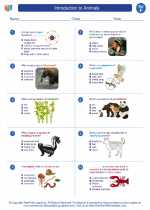Endothermic Reactions
An endothermic reaction is a chemical reaction that absorbs heat from its surroundings. This means that the surroundings become colder as the reaction takes place. Endothermic reactions are characterized by a decrease in temperature, as well as a positive change in enthalpy (ΔH).
Key Concepts:
- Heat Absorption: Endothermic reactions absorb heat from the surroundings, leading to a decrease in temperature.
- Enthalpy Change: The enthalpy change (ΔH) for an endothermic reaction is positive, indicating that energy is taken in during the reaction.
- Examples: Common examples of endothermic reactions include the melting of ice, evaporation of water, and the reaction between citric acid and baking soda.
- Energy Input: Endothermic reactions require an input of energy to proceed, often in the form of heat or light.
Study Guide:
When studying endothermic reactions, it's important to understand the following key points:
- Define endothermic reactions and identify their key characteristics.
- Recognize common examples of endothermic reactions in everyday life.
- Understand the concept of enthalpy change and its significance in endothermic reactions.
- Differentiate between endothermic and exothermic reactions, understanding their contrasting effects on temperature and energy.
- Explore the role of endothermic reactions in various scientific and industrial processes, such as in endothermic reactions used in cooling packs and chemical manufacturing.
By grasping these concepts and examples, you can develop a solid understanding of endothermic reactions and their role in the world around us.
.◂Science Worksheets and Study Guides Sixth Grade. Introduction to Animals
Study Guide Introduction to Animals
Introduction to Animals  Activity Lesson
Activity Lesson Introduction to Animals
Introduction to Animals  Worksheet/Answer key
Worksheet/Answer key Introduction to Animals
Introduction to Animals  Worksheet/Answer key
Worksheet/Answer key Introduction to Animals
Introduction to Animals  Worksheet/Answer key
Worksheet/Answer key Introduction to Animals
Introduction to Animals  Vocabulary/Answer key
Vocabulary/Answer key Introduction to Animals
Introduction to Animals  Vocabulary/Answer key
Vocabulary/Answer key Introduction to Animals
Introduction to Animals  Vocabulary/Answer key
Vocabulary/Answer key Introduction to Animals
Introduction to Animals  Vocabulary/Answer key
Vocabulary/Answer key Introduction to Animals
Introduction to Animals 

 Activity Lesson
Activity Lesson
 Worksheet/Answer key
Worksheet/Answer key
 Worksheet/Answer key
Worksheet/Answer key
 Worksheet/Answer key
Worksheet/Answer key
 Vocabulary/Answer key
Vocabulary/Answer key
 Vocabulary/Answer key
Vocabulary/Answer key
 Vocabulary/Answer key
Vocabulary/Answer key
 Vocabulary/Answer key
Vocabulary/Answer key

The resources above cover the following skills:
LIFE SCIENCE
From Molecules to Organisms: Structures and Processes